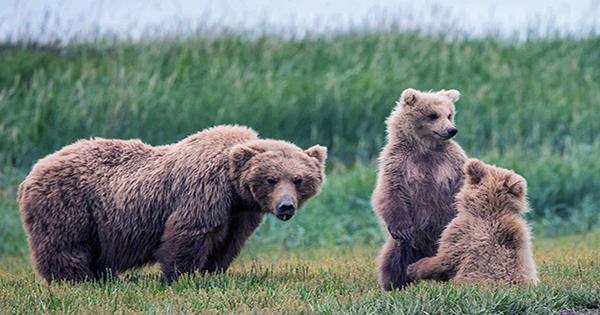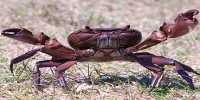Internal capacity increases with larger body size, and for Alaskan bears, it seems their improved size makes their body a major resource for some surprisingly large tapeworms. “How do we know that?” You can ask. Well, unfortunately, it’s also not uncommon for wildlife photographers and trail cams to catch a glimpse. In a recent blog post from Cool Green Science, Matthew Miller, director of science communications at The Nature Conservancy, sheds light on the fascinating body of video evidence that Alaskan bears sometimes move around like streamers attached to their anus.
Away from the remnants of some naughty group, the pale tendrils are actually parasitic. Really, heckin’ is a huge parasite. A special video that Miller embeds for your “pleasure of watching” shows a large black bear pulling behind a wire of such a mystery. In the Prince of Wales Island in Alaska, conservationist Michael Kampnich captured the scene of a stomach-churning and looked like a tapeworm at least two meters (-ft) long.
Bears can try to shake up freeloaders by practicing their favorite bear tree pole dance, but – as was the case with the bear in Kampnich’s video – it doesn’t always succeed. It is not uncommon for Alaskan bears to breed mega-worms, so where do they come from? Alaskan bears are famous for their love of salmon which they pull out of the freshwater river on foot. The same rivers are unfortunately home to tapeworm eggs that are nibbled by crustaceans.
Those same crustaceans are chased by salmon; those same salmon are bitten by the same salmon by bears Capiche? After finally running the food chain, the worm sets up camp in the bear’s digestive tract where it grows massively before exiting the exit. During their lifetime, the parasitic worms will lay many eggs that slip with the bear’s feces which they deposit in the river and here the life cycle of the tapeworm starts again.
There are many different species of tapeworms hidden in the hearts of different animals around the world, but the ones that live in Alaskan bears can reach up to nine meters (30 feet). Bears are not the only endangered species of insects, as this man has shown a 9.7 meters (foot 32 feet) tapeworm out – you have been warned. This type of guest gate plays an important role in an important group of parasitic animals and ecosystems, despite the horrors of crashing into your toilet. Some are thought to help us slow down the aging process and this is the subject of potentially important research, which is why a scientist can voluntarily become parasitic by 50 hookworms.














